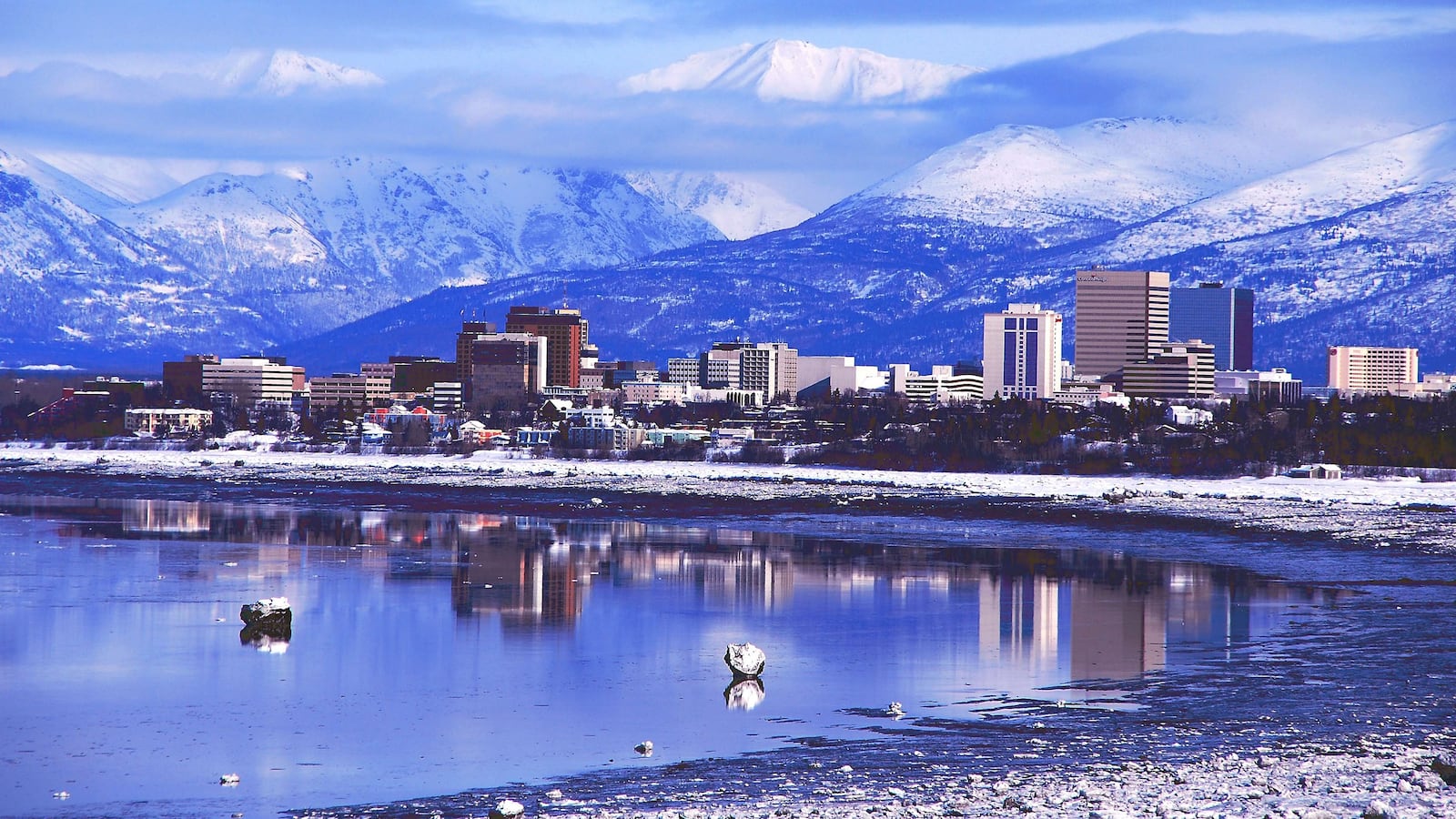Alaska is one of the most difficult places to plan a vacation to. It’s not because of safety, or how wild it is, although these two things are important. Instead, it’s difficult because it is so awe-inspiringly huge, and there are a plethora of good choices.
Do you go to the Kenai Peninsula, a rainforest encrusted place teeming with wildlife where you might spot a whale? Or head to Juneau and Sitka of the southeast—lands overflowing with glaciers and culture? Do you opt for a more rugged experience in the interior, or a more laid back experience aboard a cruise?
But here’s the thing about Alaska: there are no wrong decisions, only decisions to be made. No matter where you go, you’ll be awestruck, inspired, and have your breath taken away—after spending nearly two weeks there, I’m willing to guarantee it.
During my first hike in the state, standing atop Angel’s Landing, a trail just north of Fairbanks, and looking over the large swath of land before me, almost entirely alone, I thought, this is Alaska. This is what I came here for.
With a smile on my face, I cruised back into the bucolic western town, and went to a concert (my first in over a year). Scheduled for 8 p.m. in a botanical garden, I assumed it would be a nice way to watch the sunset, but of course, remembering the sun doesn’t set so far north in July I basked in the evening sun and watched as barefooted Alaskans do-si-doed and children swung streamers wildly, butt-naked, in front of the Blues Band.
Alaska continued to subvert my expectations throughout the trip in this way. I was beyond excited for Denali National Park—I had planned a full day of sitting and gawking at how large the mountain is. However, the mountain is impossible to see from the entrance of the park. But this doesn’t mean the park isn’t worth visiting.
While I wasn’t able to see the mountain from inside the park, the park itself is breathtakingly wild. I boarded a shuttle which took me about 15 miles into the park and as it drove away, it was the only thing I could hear for minutes after. I was alone, surrounded by mountains, streams, and wildlife.
If this is a little too wild, there are also more accessible, populated trails that are equally as beautiful and a little less extreme. Or there is an 8-hour bus trip (which I’ve only heard great things about) into the park, where experts point out wildlife and sights. However, I opted for a heli-hike.
The hike is technically outside of the park (helicopters are seldom allowed in National Parks). A helicopter carried us into the sky and dropped us right in view of the mountain. A guide told us facts about the landscape, and toured us around, towards sheep, within a safe distance of a blond grizzly bear, and finally towards a pick up spot where a helicopter came to rescue us from the terrain I never wanted to leave.
From Denali, I boarded the Alaska Railroad, which was the only way to access the interior before the road system was built. The train is a modernized relic—its arched dome allows for 360 degree views of the landscape, and as we churned towards Anchorage, the trees grew in size due to the lack of permafrost, the mountains got taller, then smaller, and wildlife such as moose frolicked in the marshlands. Best of all, about 100 miles from Denali, Denali emerged again, this time in full. Both peaks were visible as the gigantic mountain soared towards the top of the sky.
Once we pulled into the station, I grabbed a rental car and headed east, towards Chitina, on Alaska Highway 1, and my road trip truly began.
As I barreled through the mountains, glacial streams carved valleys around trees and rocks, and braided themselves gloriously throughout the landscape, with the Wrangell Mountains sitting just atop the horizon line. Upon arriving at the Chitina airport—a single strip of gravel—I watched the Copper River flow by, winding its path down towards the coast, with locals, roped up, dipping their nets as salmon muscled their way upstream.
Entering Wrangell-St. Elias National Park, the largest National Park in the U.S., is no easy feat. One can either drive McCarthy Road, which was once known as the most dangerous road in America (and although it’s gotten much better many rental companies don’t allow you to do so), or fly in a bush plane.
Naturally, I opted for the bush plane.
The little six-seater propeller aircraft, seeming to me like it was built around World War II, ratcheted up into the sky, wobbling through the mountain ranges, over the Copper River and the surrounding glaciers. It made me feel both giant and tiny at the same time—as if I were looking down at a model train set and simultaneously serving as a reminder of how small a piece I was/am within that model train set.
Upon entering the town of McCarthy, things only got stranger. The town was once a sin city of sorts, bordering Kennicott which was a huge copper mining town that was arguably one of the most advanced cities in America for a short period in the early 1900’s. However, nowadays, McCarthy is anything but. There’s a little hotel, Ma Johnson’s, with communal bathrooms and no power outlets (at least in the rooms), one restaurant, and one bar—a local saloon, the New Golden Saloon where local dogs ran around happily off-leash on the boardwalk porch as I sipped a beer among the constant onslaught of mosquitos.
When I ordered a burger there, the waitress nonchalantly asked me “You want it pink or not pink?” This only got more entertaining when my burger arrived and wasn’t the pink I had asked for.
But that, I’d learn the next day, is the charm of the town—and perhaps of Alaska itself: you think you’re getting one thing, you think you know what you’re asking for—but the state seems to know what you’re really after.
For example, after driving a few miles from McCarthy and hiking a little ways into the park, I was set to explore Root Glacier. I had asked the guide if we could do ice climbing instead, but he said the walk was much better—and he was right. Walking along the glacier with crampons on our boots, our guide toured us towards waterfalls, streams of freshly melted water we filled our water bottles with and drank from, and moulins (pools of glacier water) that were bluer than the sky above us.
From McCarthy, I took the plane back to Chitina and drove down to the port town of Valdez, famous for the Valdez Exxon Oil Spill, from which it has largely recovered. As I ascended over the Chugach Mountain Range, waterfalls emerged suddenly, bordering my vehicle, and a stream carved its way through the canyon, just inches from the road. Soon enough, I was in a sleepy, foggy little town bordering the Pacific Ocean, with a splendid backdrop of mountains within an arm's reach.
Valdez is mostly known as a great place to fish, if that’s your sport, so much so that upon checking into the hotel, I was told I needed to sign a waiver promising I wouldn’t “process fish in the bathtub.” Apparently, it had happened before and the stench was so foul, they had to remove and replace the entire fixture.
I unfortunately did not get to go fishing, however, I passed the dock and saw large halibuts hanging from hooks, eyes agape, and sampled the local fresh halibut in burritos, po boys, and as just a plain filet with a squeeze of lemon.
Instead of fishing, I spent my time kayaking in Valdez—first at sea. We paddled down the shoreline and watched as waterfalls cascaded down the neighboring mountains. Soon enough, two sea otters swam graciously past our kayaks, waving at us, and a sea lion gave us a grimacing side eye from the shore. Bald eagles circled overhead the crisp blue water, which only seemed to ripple when I dipped my paddle in to go a little bit faster.
My second kayak trip in town took me to a glacially-fed lake farther inland, which borders the Valdez glacier field. We paddled around icebergs (Celine Dion ever-present in my head) followed by a bike ride to the local fish hatchery where sea lions played happily amongst a bounty of fresh salmon struggling upstream.
The next morning I boarded a ferry, which replaced any amount of cruise time I thought I might’ve needed. As we dawdled around Prince William Sound, we saw an abundance of glaciers jutting out of the water and atop mountains, and before I knew it, I was in Whittier, a town which strangely resides in one, giant apartment building, hurtling through a one-way tunnel I was sure would collapse on me, then speeding back to Anchorage.
The largest city in Alaska, Anchorage, served as both a reminder of where I had been and where I was off to next—home. While a town, there are still lovely opportunities for escape—hiking around Alyeska Resort and biking the coastal trail are highlights. There is also the Anchorage Museum, which is a must either on your first day or your last. The museum gives a well-thought out, easily accessible history of the state, and showcases art, both from the 20th century and now, juxtaposed against each other to show the difference of past notions of Alaska and its association with Manifest Destiny, and current ideas surrounding the state, like the importance of native cultures and living in connection with the land.
Alaska, I was told before, and I remembered now, is a state of mind—one only accessible in parts when your feet are solidly on its land. This is because it involves a connection to the land that everyone who lives in the state shares. And if you spend enough time there, you start to feel it too—start to recognize the facts locals love to discuss, like the different wildflowers, the meaning of tree markings, the ebbs and flows of the tides—in a way unlike any other place I’ve experienced. The connection is deeper than the surface, if you’re willing to let it sink in. And if you do let it, like me, you’ll find yourself never wanting to leave.


